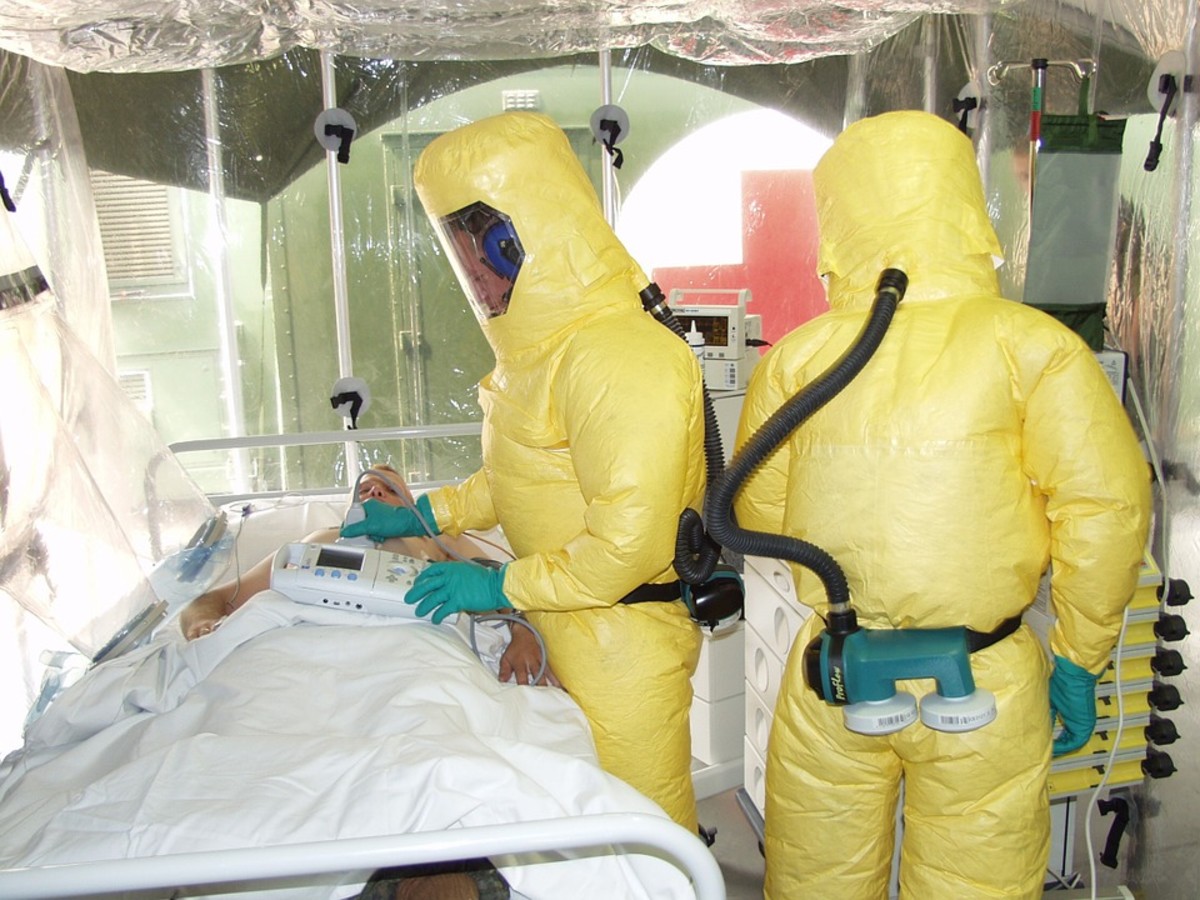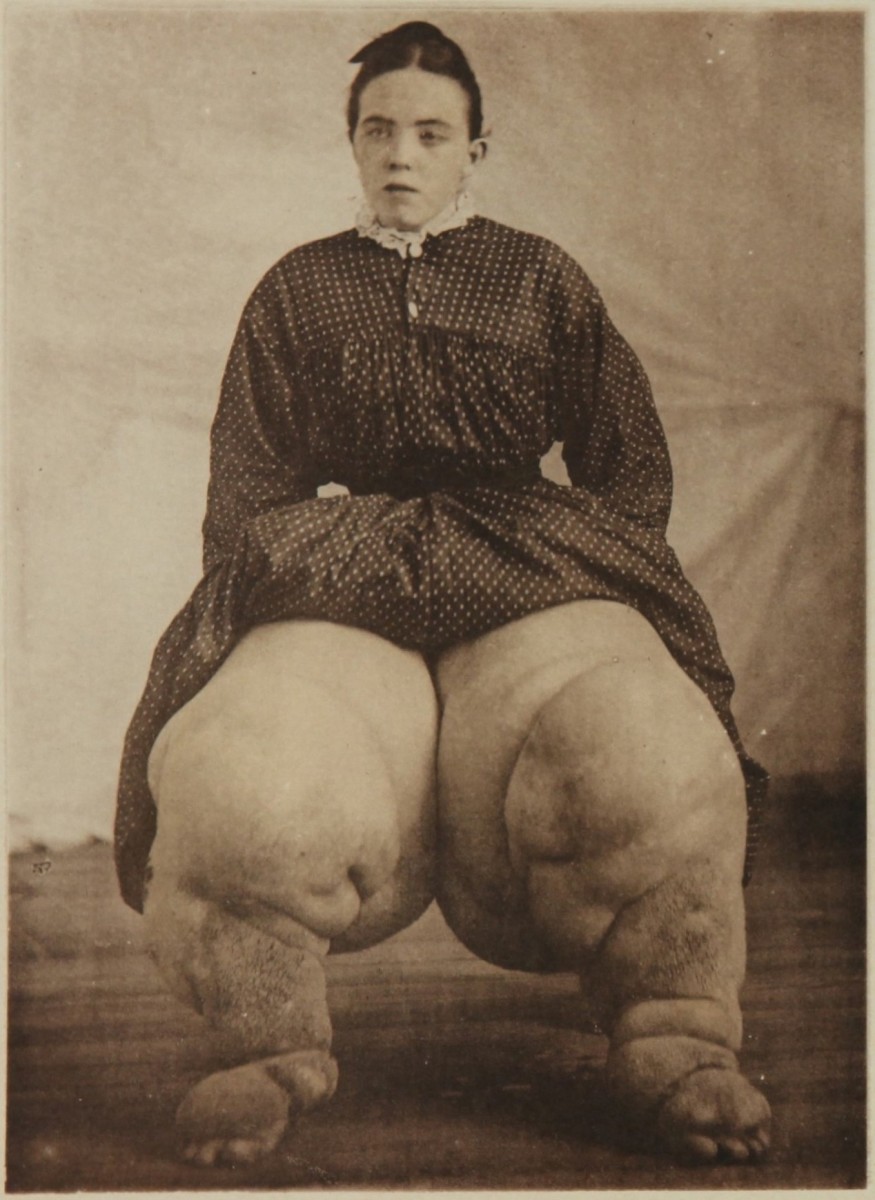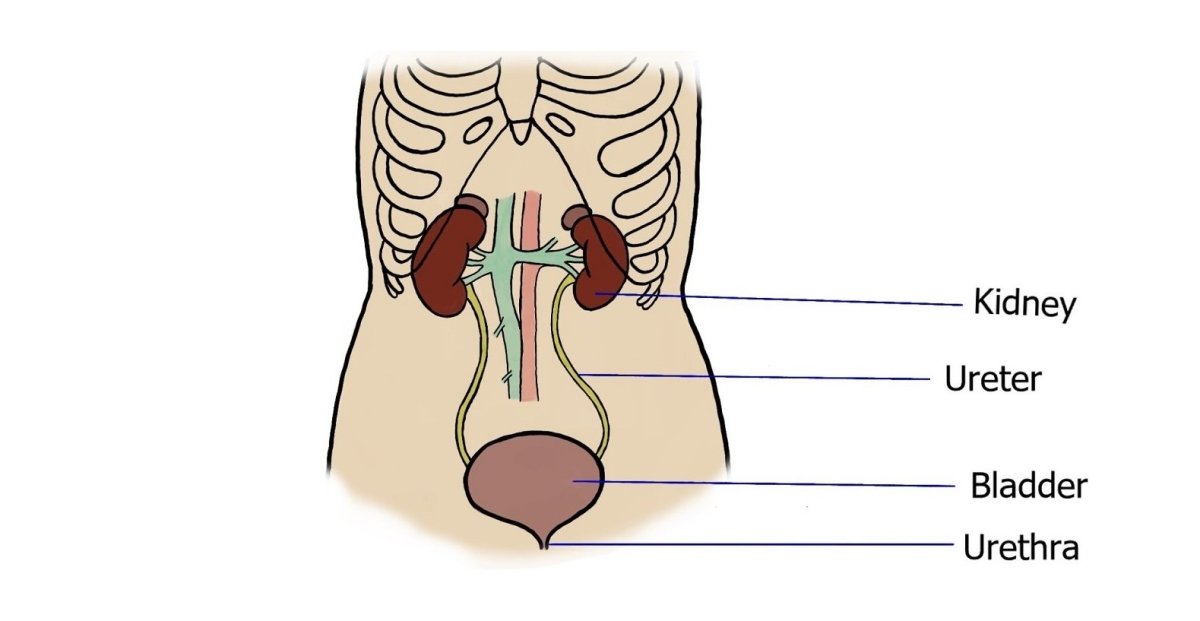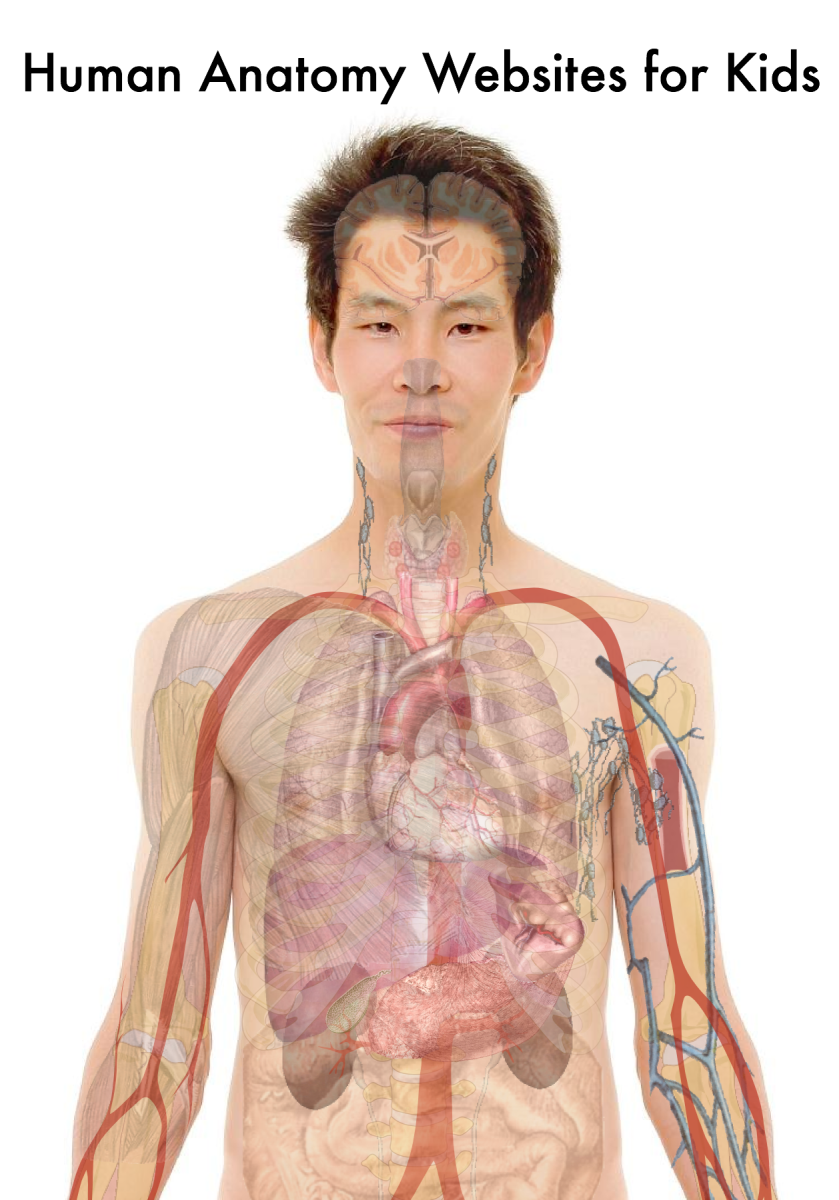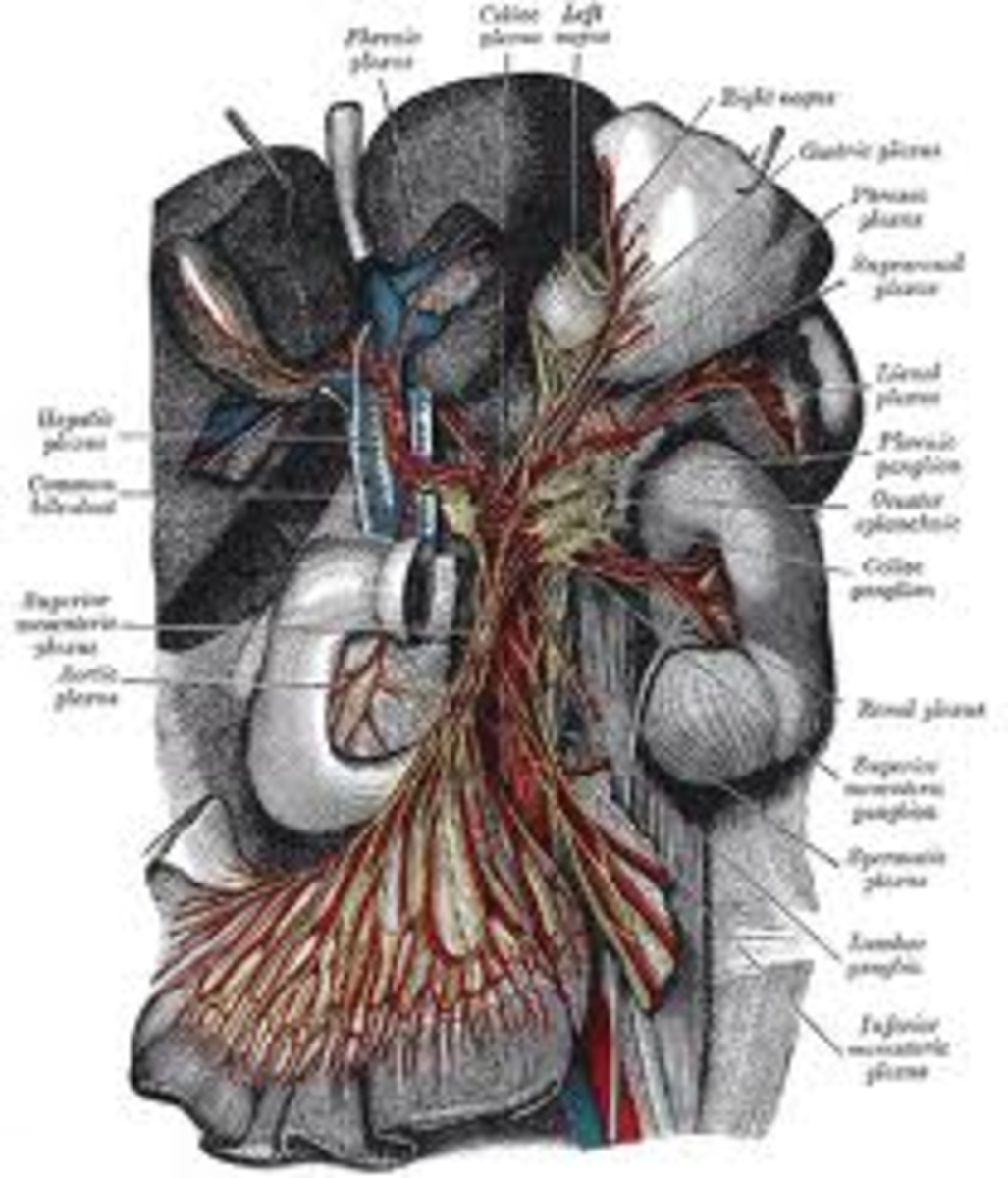Physiology of Rabies
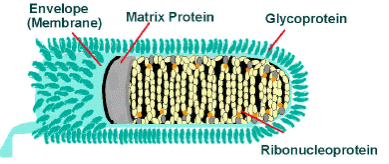
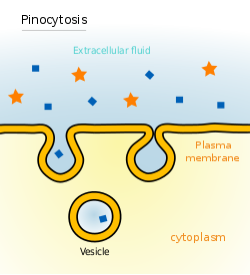
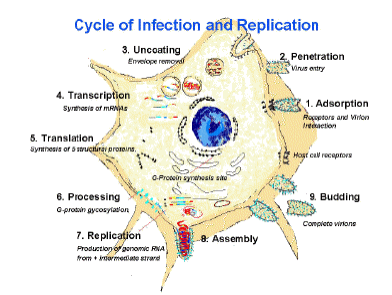
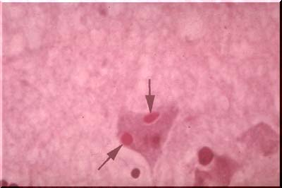
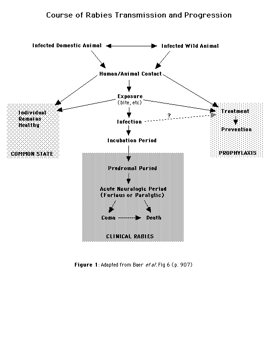
Rabies is derived from the Latin word rabies , meaning “madness.” Rabies is a central nervous system disease and is almost always fatal. The cause of rabies is a negative stranded RNA virus called Rabies Virus (RV). There are five genes that encode for the virus, which are nucleoprotein (N), phosphoprotein (P), matrix protein (M), glycoprotein (G), and viral RNA polymerase (L). The fusion of the rabies virus envelope (which can be seen in Figure 1) to the host cell initiates the infection process.
Figure 1: This figure shows the bullet-shaped structure of the Rabies Virus.
It is believed that the reaction of the G protein to the cell surface receptors may be involved. After this occurs, the virus goes through the host cell and enters the cytoplasm by pinocytosis (which can be seen in Figure 2).
Figure 2: This figure shows the process of pinocytosis, which allows the virus to enter the cytoplasm.
The virus cumulates in large endosomes and the endosome membranes fuse together with the viral membranes, which causes the release of viral RNP into the cytoplasm. The L gene transcribes the rabies RNA into leader RNA and mRNAs, which are then translated into proteins. The intracellular ratio of leader RNA to the N protein stimulates the switch from transcription to replication. After replication is complete, the assembly process begins. The N-P-L complex surrounds negative-stranded RNA to form the RNP core. The M protein forms a capsule around the RNP. This RNP-M complex travels to a part of the plasma membrane containing glycoprotein inserts. Here, the M protein initiates coiling. The RNP-M binds to the glycoprotein and the completed virus buds from the plasma membrane. In the central nervous system, there occurs preferential viral budding from the plasma membrane. However, the virus in the salivary glands mostly buds from the cell membranes into the acinar lumen. This viral budding in the salivary glands, as well as the aggressive biting behavior of the infected animal, increases the chance of a viral infection of a new host.
Figure 3: This figure shows the cycle of rabies infection and replication.
Rabies is zoonotic, meaning that it is transferred by animals, most commonly by the bite of a rabid animal. However, it can be transferred in other manners. All warm-blooded animals are susceptible to getting rabies. It usually has an incubation period of between 2-12 weeks, but there have been documented cases of incubation lasting up to a year. The onset of symptoms is determined by the bites proximity to the brain and the number of virus particles in the infection. Negri bodies, which are characteristic of rabies, are inclusion bodies that are commonly found in the cytoplasm of infected nerve cells.
Figure 4: This figure shows Negri
bodies located in a rabies-infected nerve cell.
The virus is located in the nerves as well as the saliva of an infected and symptomatic individual, however transmission between humans is rare. After a human is bitten, the virus enters the peripheral nervous system. The virus binds to the nerves via nicotinic acetylcholine receptors. During this time after a person is first infected, rabies is hard to detect and does not present symptoms. This is the time when a person can receive vaccination. Once the virus reaches the brain, it quickly causes encephalitis, or inflammation of the brain. The cells in the brain that are affected include the cerebellum, the purkinje cells, the hippocampus, and the pontine nuclei. This stage of rabies is referred to as the prodromal phase and is the onset of symptoms. Once the virus moves along the nerve axons from the peripheral nerves to the central nervous system (through retrograde axoplasmic flow), the patient starts exhibiting symptoms. It is believed that “the neuromuscular junctions are very important during this transition, as their physical and chemical properties appear to direct the virus to infect the nerve cells,” (Hunt, 2009). This usually occurs through the sensory and motor nerves. Treatment becomes ineffective at this point and the mortality rate is almost 100%.
Once the virus reaches the central nervous system the virus amplifies very quickly because of multiple cycles of replication. This stage of rabies is known as the acute neurological period. The centrifugal spread of rabies leads to the virus overtaking very innervated areas, such as the salivary glands. Once there is cerebral infection, behavioral symptoms occur. The first symptoms to occur are usually numbness and pain where bitten. Other early symptoms include fever, cough, sore throat, abdominal pain, and anxiety. Later symptoms that effect the central nervous system are more pronounced and include anxiety, hallucinations, delirium, hydrophobia, muscle spasms in the face, neck, and diaphragm followed by seizures, paralysis, significant fluctuations in temperature, heart rate and blood pressure, coma, and heart and respiratory failure. Hallucinations and delirium are the result of brain inflammation and other dysfunctions occurring in the brain such as dopamine. Encephalitis is also known to cause seizures because the neurons firing in a patient’s brain with encephalitis misfire, causing the seizure. Paralysis occurs because of the damage being done to the nervous system. Death usually occurs between three and twenty days after the onset of symptoms. The virus is concentrated in the salivary glands, which explains why it is transferred usually by bites. The virus also damages the muscles involved in swallowing (usually paralyzing them), which causes a lot of pain. Because swallowing causes so much pain, the patient usually becomes dehydrated, and thus, very afraid of water. This is why the disease was once called hydrophobia. Dehydration causes the muscle spasms that patients can have. There are two main ways in which these symptoms present themselves. The more common type is known as furious rabies. This type includes seizures, periods of anxiety, hallucinations, and violent behavior. The second form is known as paralytic rabies. This is characterized by a slow paralysis of the patient and typically these patients live a little longer than those who have furious rabies. The result of death is usually respiratory failure.
Figure 5: This figure shows the progression of rabies from transmission onward.
There are two different types of rabies prophylaxis that are effective when used before the onset of symptoms. The first, Rabies Vaccine, is an inactivated vaccine and is immunogenic. It is grown in human diploid cells and is given by injection over a four-week period. Human Rabies Immunoglobin (HRIG), another treatment for rabies, is made from the plasma of hyperimmune donors. About half of the dose is injected into the site of the bite and the other half is given through intramuscular injections. There two treatments are used in conjunction with one another. These treatments should be administered no later than 2 days after the bite occurs.
It is still unknown what occurs during the long incubation period of the disease and the molecular mechanism in which the virus attacks the nervous system. However, there has been a lot of progress with the control of rabies and the development of vaccinations. Overall, rabies is a frightening disease and hopefully one day scientists will be able to eliminate, or at least reduce its incidence rate significantly.
Sources
- Baer, George M., Bellini, William J., and Fishbein, Daniel B. (1990) "Rhabdoviruses". In: Fields, B.N. et al. (eds) Virology , Second Edition, pp. 883-920. New York: Raven Press, Ltd.
- Dietzschold, B., Schnell, M., Koprowski, H. Pathogenesis of rabies. Curr Top Microbiol Immunol. 2005; 292: 45–56.
- Hunt, Dr. Richard. "Rabies." Microbiology and Immunology . University of South Carolina School of Medicine, 17 June 2009. Web. 10 Dec. 2009. <http://pathmicro.med.sc.edu/virol/rabies.htm>.
- Maramorosch, Karl, Frederick A. Murphy, and Aaron J. Shatkin. “Pathophysiology of rabies virus infection of the nervous system.” Advances in Virus Research ,Vol. 42. 1993. Academic Press, Inc. Web. 7 Dec. 2009.
- "Natural History of Rabies." Centers for Disease Control and Prevention . Department of Health and Human Services. Web. 08 Dec. 2009. <http://www.cdc.gov/rabies/history.html>.
- “Rabies and rabies research: past, present and future.” Z F Fu. Vaccine. 1997 Spring; Thomas Jefferson University.15 Suppl: S20–S24.



